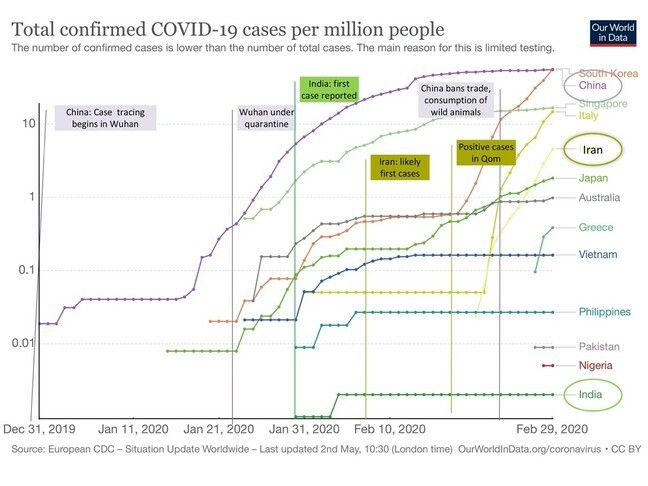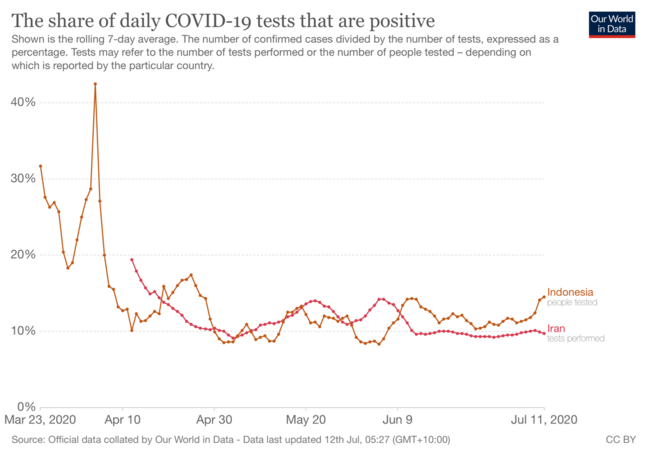Home / Healthcare & Medicine / Antimicrobial & Antibiotic Resistance / COVID-19: Global Health Perspectives / COVID-19 Progression in Different Countries

Reach your personal and professional goals
Unlock access to hundreds of expert online courses and degrees from top universities and educators to gain accredited qualifications and professional CV-building certificates.
Join over 18 million learners to launch, switch or build upon your career, all at your own pace, across a wide range of topic areas.

 Total confirmed COVID-19 cases per capita and selected timepoint events for different countries January–February 2020. See animation
Total confirmed COVID-19 cases per capita and selected timepoint events for different countries January–February 2020. See animation  Positive rate for COVID-19 tests conducted in Indonesia and Iran January–July 2020. (Source:
Positive rate for COVID-19 tests conducted in Indonesia and Iran January–July 2020. (Source: 






